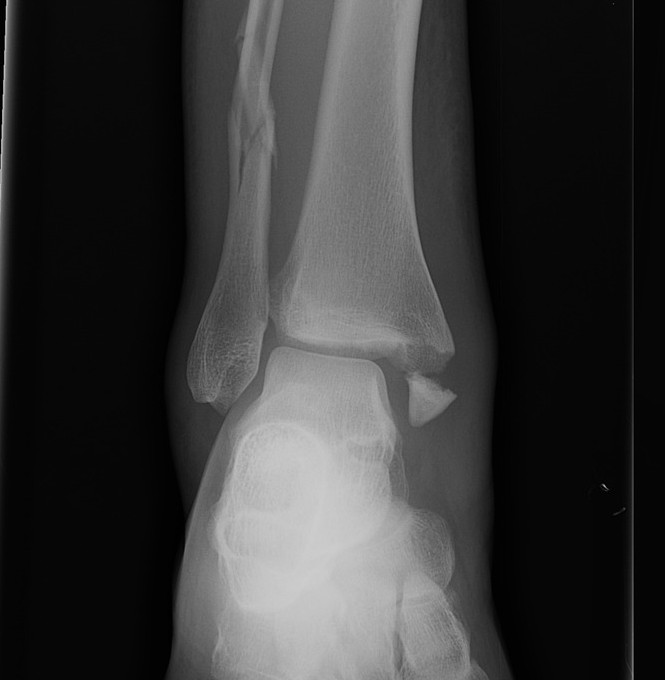Ankle Fracture

Ankle fracture
When you hear a doctor talk about an ankle fracture they are usually referring to the bony prominences on the outside and inside of the ankle. These bumps are called the lateral and medial malleolus. Occasionally the back portion of the ankle joint can also fracture (the back of the tibia).
How is it caused?
This is a common injury, usually caused by twisting the ankle with enough force to cause the bones to break. It can also be caused by a direct blow (for example during a football tackle), falling, or jumping and landing awkwardly.
What are the symptoms?
- There may be a cracking sound and the ankle will be very painful, making it difficult (or impossible) to walk
- It will usually swell up quickly
- In some cases there may be a bone poking out of the skin (open or compound fracture)
- The ankle may be an unusual shape (dislocated)
What should you do?
If you think you have broken your ankle, you should visit your local Accident & Emergency department as soon as possible. You can reduce pain and swelling by rest, elevating your foot (raising it above the level of the heart), applying ice wrapped in a towel, and taking painkillers and anti-inflammatory medication if advised by your doctor. Once you are in hospital a plaster cast splint can be applied which should help to relieve the pain.
How is it diagnosed?
A medical examination and discussion of your symptoms is usually backed up by X-rays to confirm the fracture. In some cases you may also be offered a CT scan, which gives the doctor a more detailed view of the injury.
How is it treated?
A simple ankle fracture can be treated by being put in a plaster cast and keeping weight off the foot by using crutches. Along with painkillers and anti-inflammatory medication (if advised by your doctor), this will give the ankle a chance to heal well without further treatment. However, if the ankle is dislocated you may be given sedation while the bones are pushed back into place. If you have a more serious fracture, or the ankle is unstable, you may need to have an operation to fix the bones back in place with plates, screws and wires to prevent them moving out of position.
How long does it take to recover?
Usually, your foot is kept immobile in a plaster cast for six weeks. The cast is then removed and you will gradually be able to return to normal activity over the next six months.
Getting back to normal
Most ankle fractures heal without any problems, although you may have symptoms from time to time, such as stiffness in cold weather. In some cases a fracture can lead to irreversible wear and tear (osteoarthritis) in the joint that may need to be treated.
Important: This information is only a guideline to help you understand your treatment and what to expect. Everyone is different and your rehabilitation may be quicker or lower than other people’s. Please call us for advice if you’re worried about any aspect of your health or recovery.